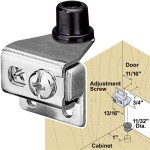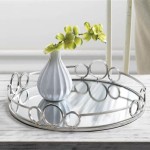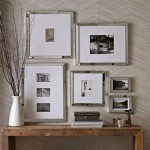Antique Rosettes for Mirrors: A Guide to Elegance and History
Antique rosettes offer a unique way to enhance the beauty and character of mirrors. These decorative ornaments, often crafted from materials like plaster, wood, or metal, provide a focal point and add a touch of historical charm. Understanding their history, materials, and application can help collectors and enthusiasts appreciate their significance and make informed decisions when incorporating them into their décor.
Materials and Construction
Antique rosettes are typically crafted from a variety of materials, each offering distinct aesthetic qualities and levels of durability. Plaster rosettes were a popular choice due to the material's versatility and ease of molding into intricate designs. Wood rosettes, often carved from hardwoods like oak or mahogany, provide a rich, natural aesthetic. Metal rosettes, frequently cast in brass or bronze, offer a more robust and gleaming finish. The choice of material often reflects the overall style and period of the rosette.
The construction methods employed in creating antique rosettes varied depending on the material. Plaster rosettes were typically cast in molds, allowing for detailed and repetitive designs. Wood rosettes required skilled carving, often showcasing intricate floral patterns or geometric motifs. Metal rosettes were usually cast using molten metal poured into molds, resulting in durable and finely detailed pieces. Examining the construction techniques provides valuable insight into the craftsmanship and historical context of the rosette.
Styles and Historical Context
The style of antique rosettes often aligns with broader artistic and architectural movements. Victorian-era rosettes frequently feature elaborate floral patterns, echoing the era's emphasis on naturalism and ornamentation. Neoclassical rosettes, inspired by ancient Greek and Roman art, often incorporate symmetrical designs, acanthus leaves, and other classical motifs. Art Deco rosettes showcase geometric shapes and streamlined designs, reflecting the modernist sensibilities of the early 20th century. Identifying the stylistic features of a rosette can help determine its approximate age and origin.
Rosettes played a significant role in interior decoration throughout history. In grand Victorian homes, they were frequently used to embellish mirrors, ceilings, and other architectural elements, contributing to the overall opulence of the space. During the Art Deco period, their streamlined designs complemented the sleek and modern aesthetic. Understanding the historical context in which rosettes were used provides insights into their significance and cultural relevance.
Application and Restoration
Applying antique rosettes to mirrors typically involves careful consideration of placement and mounting techniques. Historically, rosettes were often affixed using adhesives or small nails. When working with antique mirrors, it's crucial to choose methods that won't damage the delicate silvering or the frame. Consulting with a professional restorer is recommended, especially when dealing with particularly fragile or valuable pieces.
Restoring antique rosettes requires specialized knowledge and techniques. Damaged plaster rosettes might require patching and repainting, while wooden rosettes might need careful cleaning and repair of any cracks or chips. Metal rosettes may benefit from gentle polishing to restore their original luster. When undertaking restoration, it's essential to prioritize preserving the original character and patina of the rosette.
The placement of rosettes on a mirror greatly influences its overall aesthetic. A single, centrally placed rosette can create a simple yet elegant focal point. Alternatively, multiple rosettes arranged around the perimeter of the mirror can create a more elaborate and ornate effect. Careful consideration of the mirror's size, shape, and existing decorative elements will guide the placement decisions.
Selecting appropriate adhesives and mounting hardware is crucial for ensuring the long-term stability of the rosettes. Using reversible methods whenever possible is a best practice, allowing for future removal or adjustments without damaging the mirror. Choosing adhesives compatible with the materials of both the rosette and the mirror is essential to prevent any adverse reactions or discoloration.
Documenting the condition of antique rosettes before, during, and after restoration is a valuable practice. Photographs and written descriptions can help track the restoration process and provide a record of the rosette's history. This documentation can be particularly helpful for future appraisals or if further restoration work becomes necessary.

12 Brass Flower Mirror Rosettes Zc144

Cast Brass Tudor Rose Mirror Rosette Rough Old Glass

11 Mirror Rosettes Ideas Corner Antique

Cast Brass Flower Rough Old Glass

Silver Mirror Rosettes Antique Tiles Bedroom Decor Design

Antique Mirrors Residential Gallery Anchor Ventana Glass

Antique Gold Floral Metal Mirror Rosettes Include 8

Mirror Rosettes Retro Reflections

Antique Mirrors Residential Gallery Anchor Ventana Glass

Custom Made Mirror Rosettes Available Through Striptiles Com Antique Tiles Vintage Decor








